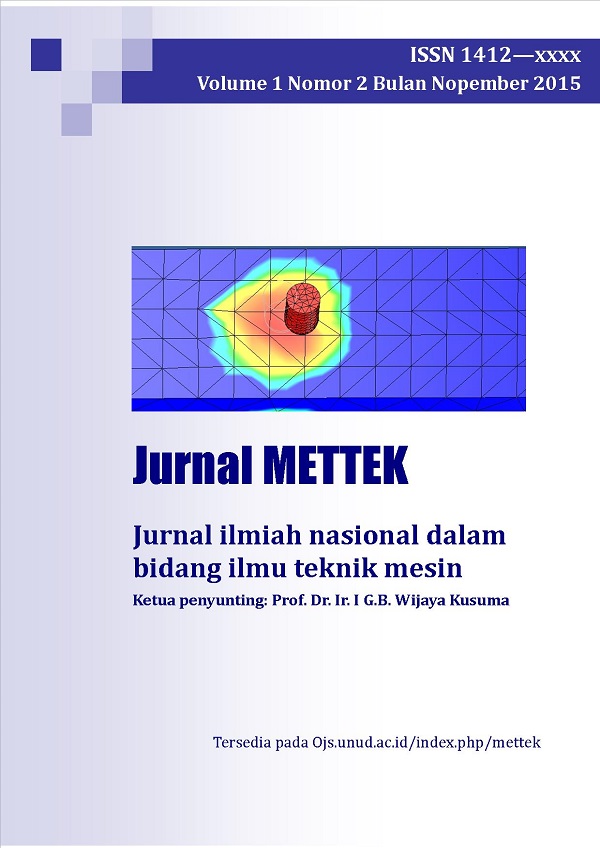Perancangan Gasifikasi Downdraft dengan Variasi Laju Aliran Oksigen sebagai Agen Gasifikasi
Abstract
Abstract
Biomass energy is energy derived from biological material from plants such as wood, rice husk, corn head, and other The process of conversion of biomass into energy can be process by combustion, pyrolysis, and gasification. The gasification process is a process of utilization of biomass by converting energy from a solid raw material (biomass) into syn-gas (the synthesis gas) that can later be used as fuel. One example of gasification that has been developed is a downdraft system. Gasification process has several factors that affect the process and content of syngas dihasillkannyaie, characteristics of biomass gasifier designs, types of agents gasifikasinya, and the air-fuel ratio.
In this study the gasification reactor is designed to use black steel pipe diameter of 6 "with a height of 1 meter reactor. Agent oxygen gasification syngas selected to obtain better results, the oxygen flow rate by 2, 4, and 6 liters per minute, and the use of wood as fuel shaved.
The results were obtained variation of the oxygen flow rate of 4 lpm produce useful energy and efficiency are the highest, followed at 6 lpm oxygen flow rate, and the lowest last on oksegen flow rate of 2 lpm. This is in addition influenced by the percentage of syngas CO, CH4 and H2, is also influenced by the length of the gas utilization that occurred in each valiari oxygen flow rate. By which time the utilization of this gas will affect the actual value SA which determines the number of moles of syngas CO, CH4 and H2.
Downloads

This work is licensed under a Creative Commons Attribution-NonCommercial-ShareAlike 4.0 International License.







